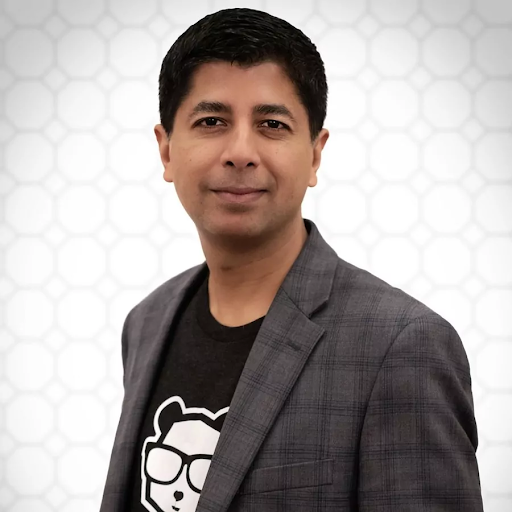AIOps in five years…
From forecasting the next binge worthy show on your Netflix to advancing algorithms for self-driving cars, AI is more integrated into life than we thought possible. When it comes to AIOps predictions, there’s no question of AI’s value in predictive intelligence and faster problem resolution for IT teams. In fact, Gartner has reported that there is no future for IT Operations without AIOps. The estimated market size for AIOps is $1.5 billion, with a compound annual growth rate (CAGR) of around 15% between 2020 and 2025.
So, where is AIOps headed in five years? Here’s what the vendors and thought leaders in the AIOps space had to share with Sean on Find Flow.
AIOps Prediction #1: BigPanda – Build confidence in AI with transparency

“…just like you would expect with any kind of application development shop, they can test and preview the results of those changes to the machine running logic before it’s deployed in production. […] And what that means for enterprise and users is they can actually start to gain trust in […] machine learning, because they know that they can see what it is doing.”
– Mohan Kompella, Product Marketing Lead at BigPanda
AIOps can be shrouded in a lot of mystery for many IT professionals, especially if they don’t understand how the AI works in the IT environment. When it comes to machine learning, engineers want to know what it’s doing and how it works. Mohan said, “AIOps customers are looking for a product that provides full transparency, testability, and controllability.”
That’s why AIOps features and platforms of the future should be human-explainable. Not only are systems deployed with an out-of-box ML model, they should also start reducing noise in 6-8 weeks. Over the course of those weeks, the noise reduction rate is around 70-75 percent as the AI learns the environment.
That’s great, but what is most important is that the AI begins to make suggestions to IT teams for how to improve the system. It doesn’t make changes on its own. An AI should not make autonomous decisions for users. It should suggest a new correlation pattern and then the user can examine it, test it, make changes, and deploy it in production as they see fit. That’s the power of the AI + Human collaboration that we’ll see more of in the next three to five years.
ServiceNow – Freeing people for higher pursuits

“AIOps frees people for higher pursuits.”
Christian Malone, Principal Solutions Architect at ServiceNow
A lot of the conversation around AIOps predictions has gotten muddled into a transient term for achieving “digital transformation.” But AIOps is not a buzzword, it’s a strategy for business growth and opportunity. In order to fully grasp and unlock the potential of AIOps, companies have to understand the use cases and apply them accordingly. But applying them doesn’t mean pushing a tool into an environment. AIOps is a journey that requires strategy, implementation, guidance, and change management across an organization.
The trade off? Freeing people for higher pursuits as Christian puts it. He says, “I’m a big Calvin Hobbs fan and they had a great comic panel at one point that just showed Calvin raising his hand in school saying, ‘You know, with the pace of technology, maybe we should just leave the math to the machines and go outside and play.’ And, I’m one of those guys that wants to help people to go outside and play, and then I want to go out and play with them.”
So, we have to keep our sights set on AIOps as a way to free people from manual processes. This shift in thought around what the function of the IT department should be is where AIOps presents the greatest value.
Dynatrace – Bring legacy systems up to speed with continuous automation

“So the continuous automation is everything from on the inside, allowing us to turn around and tie as seamlessly into these customer environments. […] what we’re finding is that […] one of the most significant transformations is that prior to that, under that old waterfall approach with the old amont solution roughly 90% of our bugs were reported by customers in production.”
Russell Wilkinson, Partner Engineering Manager at Dynatrace
Not every company is interested in or capable of investing in the latest technologies to bring their environments ‘up to speed’. AIOps helps these legacy investments stay relevant as well as scale with business growth. It does this through continuous automation tied seamlessly into the IT ecosystem. The AI gets fed the latest information and data that translates from anomaly detection into automated self-healing events. That’s the power of AIOps at work.
Russell says that with continuous automation in the AIOps platform, about 93 percent of ‘bugs’ are caught before they affect users. That’s a huge leap from only 10 percent of ‘bug’ reporting in legacy systems that are flying under the radar without the support of AIOps. As these use cases continue to grow in number, we will certainly see companies adopt AIOps as part of their core systems to feed better AIOps outcomes and maintain systems at peak levels.
Digitate – Taking AIOps to the edge

“Another interesting phenomena that we also see is [that] a lot of the I would say architectures today are distributed in nature, taking it really to the edge, taking it to the telecom tower, taking it to a ship, a cruise ship or taking it to devices, right. […] a lot of it has become very critical, the reliability, resiliency, and stability of those edge components.”
Jayanti Murty, CTO (Americas)
In the next five years, we will see AIOps taken to the edge in critical use cases. There’s no question that it will move beyond IT Operations. While it started with predictable use cases for infrastructure extending to application, it’s going to expand into multiple domains. We’re already seeing it with hybrid work environments.
Jayanti notes that we’ve already expanded the capabilities of AIOps in terms of how we work and function. As we continue pushing the boundaries on how far we can take AIOps, we will see it extend to critical edge components like naval vessels, remote oil rigs, cruise ships, and telecom towers. A lot of AIOps will go further out as there is a greater intake of it on those fronts.
CloudFabrix – Frictionless AIOps Adoption

“Everybody understands what AIOps is, what are the benefits. Now they’re all interested in ‘how do we get there?’ So I think the discussion now is that frictionless is the keyword.”
Bhaskar Krishnamsetty, Chief Product Officer at CloudFabrix
Over the last two years, we’ve seen a shift in the dialogue around AIOps. The question used to be “What is AIOps?” Now most IT leaders are aware of what AIOps is and the benefits. The question now is “How do we get there?” More importantly, “How do we achieve frictionless AIOps maturity?”
Bhaskar and Tejo both highlight that frictionless AIOps adoption is measured by the ease of implementation. There are two categories: technically frictionless and culturally frictionless. You need both for a smooth AIOps adoption.
Technically frictionless adoption refers to the time to value, data integrations, and data plumbing. All of this is part of the AIOps journey. While it may be time consuming for adopters, there are experts out there to help guide the process to complete maturity. But technical application is only part of AIOps adoption.
People management is the other half of frictionless AIOps adoption. Those looking to integrate AI in the IT department should carefully plan and consider how this change will affect the team. People are an important part of the success of an AIOps strategy. So, taking steps to train your team and make them integral to the implementation process will ensure frictionless AIOps adoption at a cultural level.
Moogsoft – Evolving next gen AI algorithms for scale

“…there’s gonna be a shakeout as people realize when they’re looking for a vendor in this space, the stuff that looks shiny,…claims to be AIOps turns out to be a first generation SaaS product using the rules based system […]. The future looks like a tool that can cover the entirety of the observability data sets, and provide timely insights, using advanced algorithms that are easy to use because they’re advanced, and delivering in a package that can scale.”
Phil Tee, CEO of Moogsoft
To say that a lot has changed in the last few years is an understatement. If we thought technological advancements were happening rapidly, it’s nothing compared to where we are today with AI integrations in IT Operations. In fact, we’re already pioneering the next generation of AI algorithms. Hello, Gen 2 AIOps!
The real reason behind our latest advancements in AIOps is due to the 2020 pandemic. When everybody shifted to remote, this also forced IT operations to shift the whole infrastructure from centralized to application-based. Not only were data points growing exponentially, but they were also sporadically dispersed everywhere. Making work accessible and available, but at the same time secure and contained has been nothing short of a big lift for IT teams.
Phil says that AIOps has become an inevitable necessity for many organizations. But more important are the vendors that have evolved the AI algorithms to suit these new IT environments. These are the vendors to watch, because they will re-imagine and renovate their entire platform to suit this new Gen 2 AIOps. Organizations aren’t going to get less complex and data usage isn’t slowing down. So, it’s crucial that the AIOps of today comfortably consume metrics and process them through an infrastructure that is adept at pinpointing incidents and taking action.
Zenoss – Gen 2 AIOps predictions accelerate problem resolution

“The first version of AIOps platforms don’t fix your monitoring, just send all of the events to this platform. And then the second version, the second iteration of AIOps they’re vendors that were already collecting the data. And now they’ve added machine learning to the back end to do better root cause analysis and accelerate problem resolution.”
Trent Fitz, Chief Marketing Officer at Zenoss
Incredibly, we’ve seen the AI algorithms for AIOps dramatically evolve within the last two years. We learned a lot in the last couple of years about diagnosing events and parsing them to IT teams for resolution. Yet, the problem that many IT teams are still grappling with is time to value.
Generation two (Gen 2) AIOps are building topology into the algorithm to resolve the time to value issues. So now when the machine learning algorithms are detecting issues with the business or delivery of business applications, they are able to traverse a model and see all of the systems that constitute that IT service. It makes it infinitely easier to pinpoint what the problem is.
[READ NOW] → AIOps: Transforming IT Operations for the Future
ScienceLogic – Making AIOps business-centric

“…Start with data and consider what are the tools that you have in place? What are the mechanisms that you have in place? What kind of data are you trying to bring together in order to drive automation? I think that’s really the core to AIOps is having an intelligent data source…”
Leslie Minnix-Wolfe, VP of Product Marketing at ScienceLogic
IT leaders who are interested in AIOps investment often ask: “Where do I start the journey?” or “What ‘s the best use case?” The answer is two-fold: 1) It depends on your organization and 2) Start with your data. Automation is the ultimate goal of AIOps, but sometimes the best use case to start with is understanding the data inside of your environment.
In terms of investing in AIOps, it’s a heavy lift to get from understanding the data to diagnosing issues to automating repair. They are all steps in a larger AIOps strategy. But the ROI many organizations achieve from investing in AIOps is invaluable.
First, investing in AIOps must begin with a vision centered on producing business metrics. Some key value indicators are the following:
- Bringing data together
- Saving time
- Leveraging tools you already have
- Having a single platform that houses data
- Standardizing data
Leslie says that from those metrics we see the ROI come from tools elimination, the infrastructure they run on, the admin staff, the training, and the integrations organization build. To put it into perspective, some organizations can see ROI in the millions of dollars saved from optimizing operations.


